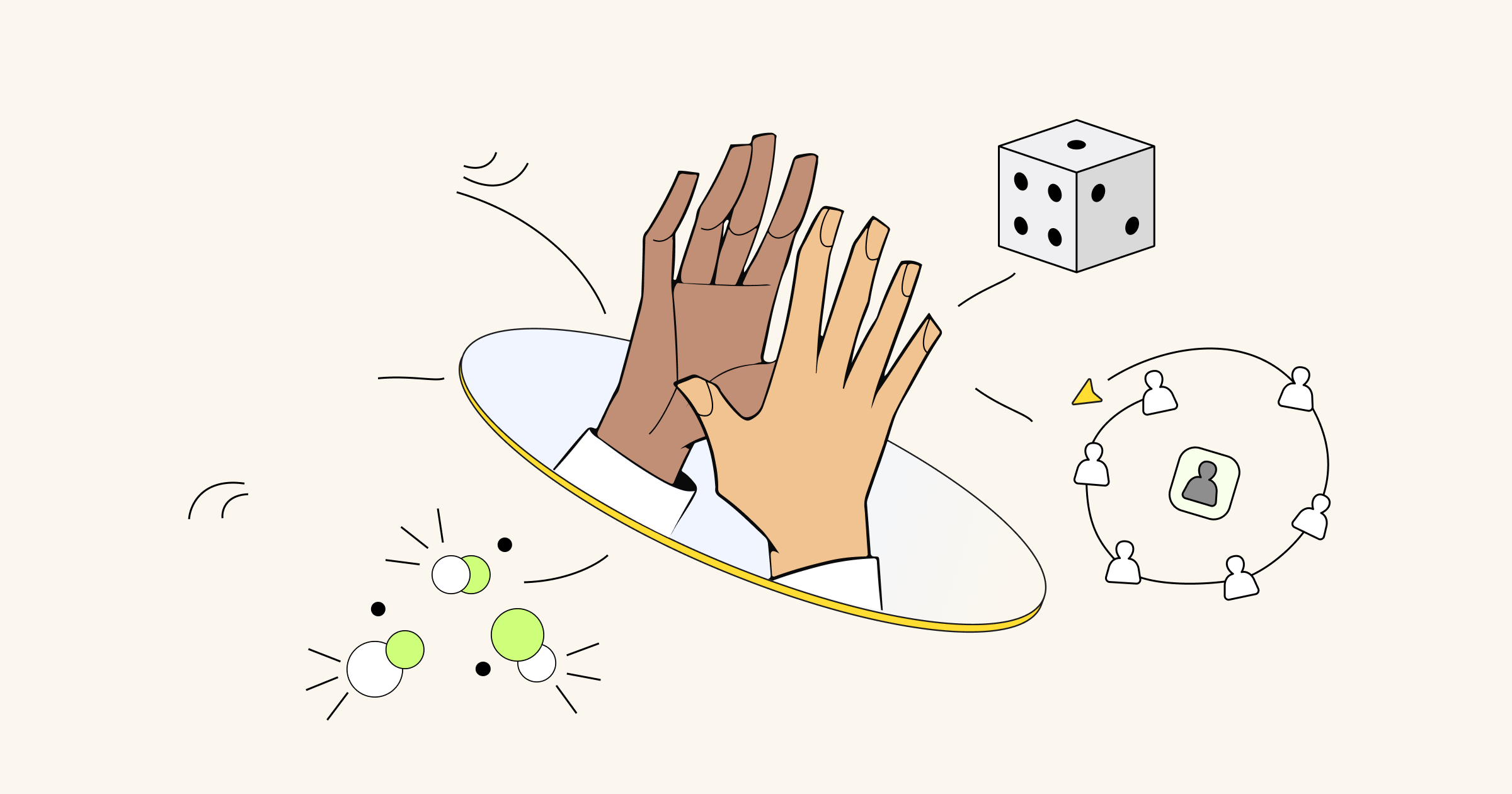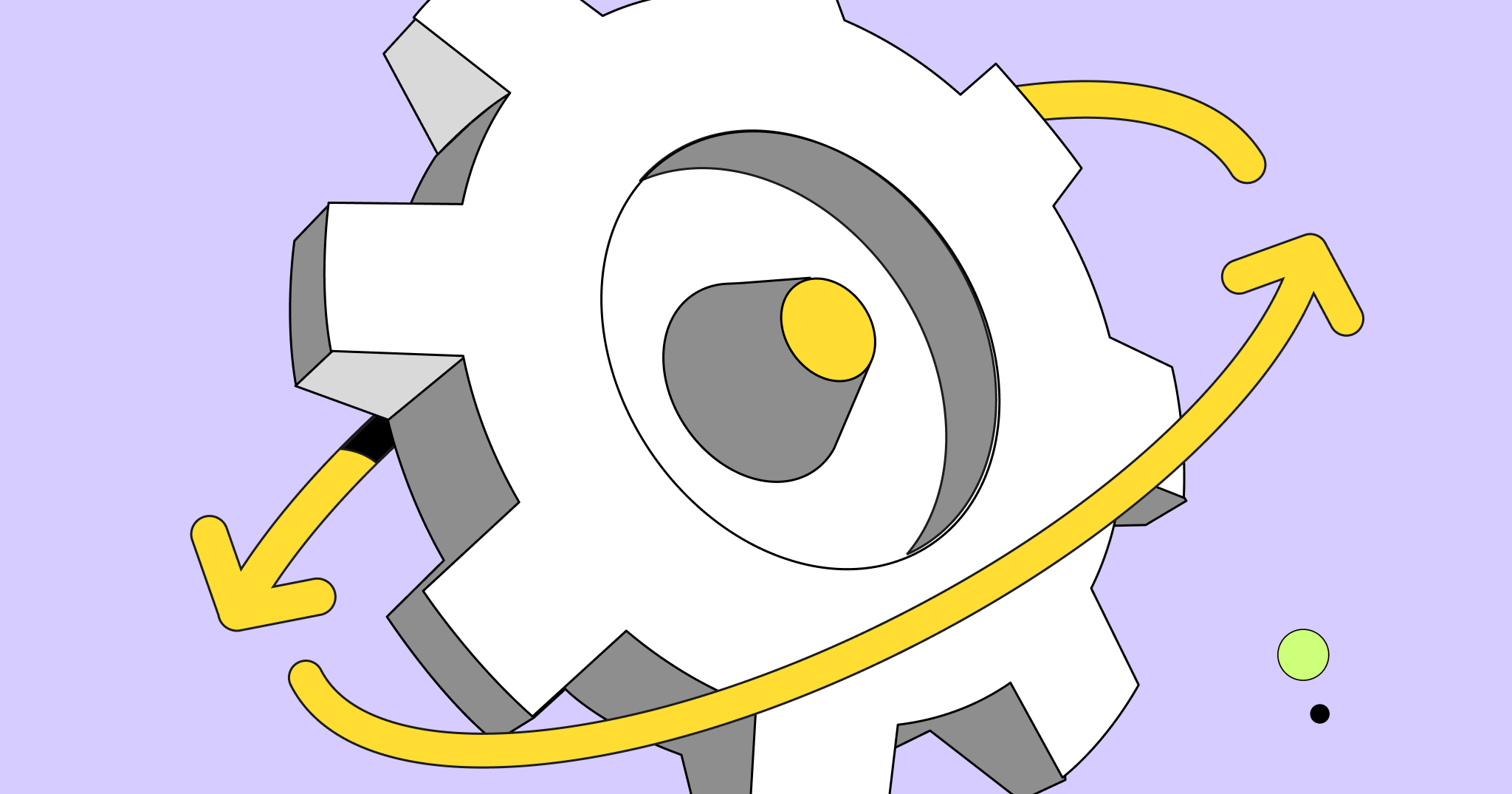We won’t sugarcoat it: cross-functional collaboration is hard.
When you pull together people from disparate departments into one unit, it’s common to grapple with poor communication, mistrust, lack of alignment, and confusing team dynamics.
As the leader or project manager, you have the daunting responsibility of getting everybody on the same page — and these cross-functional team building activities are a great place to start.
Will they resolve all of your cross-functional headaches? Maybe not, but building a foundation for future collaboration that is grounded in camaraderie certainly doesn’t hurt.
1. Build alignment with the Team Canvas
HOW LONG YOU NEED: 90-120 minutes
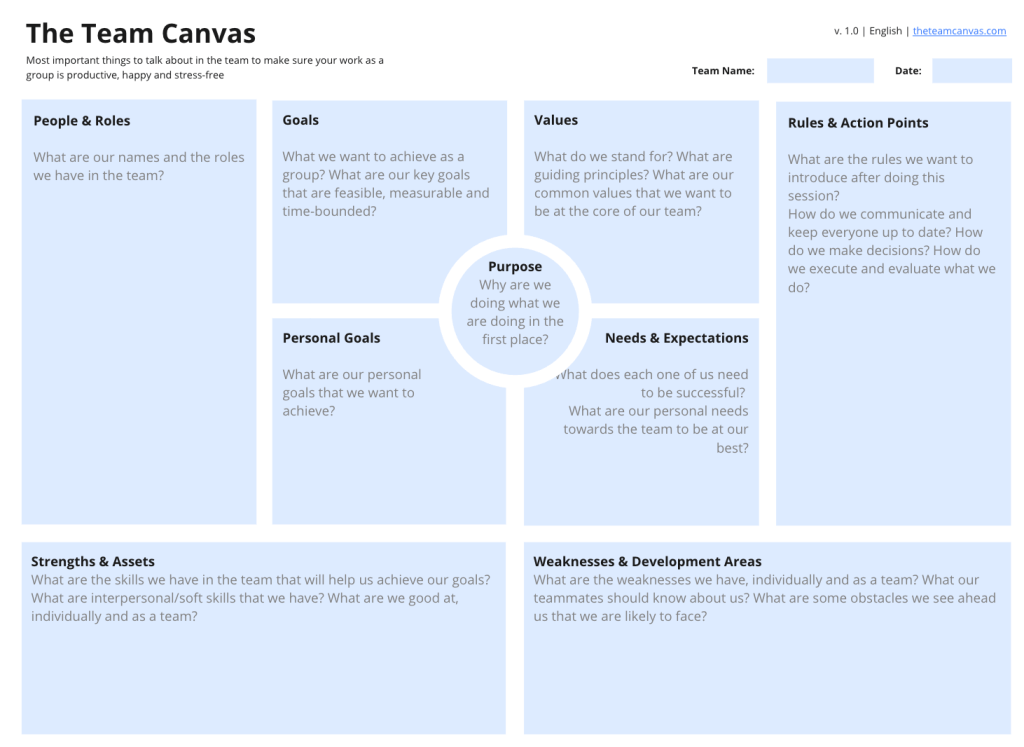
Knowing who people are and what they’re responsible for might be obvious on a team that works together constantly. But this seemingly basic information can quickly get lost or confused on a cross-functional team — particularly one with a lot of members.
This Team Canvas template created by Alex Ivanov, the founder and co-author of Team Canvas, outlines all of the important topics your team needs to discuss at the outset. Think things like your people and roles, team purpose, goals, values, needs, action points, and more.
Building this shared understanding at the start might feel elementary (or even unnecessary). But when poor alignment is one of the most common causes of project failure, taking the time to agree on these basics mitigates a ton of headaches and conflicts as your team moves forward.
2. Foster psychological safety with a Team Contract
HOW LONG YOU NEED: 1 hour
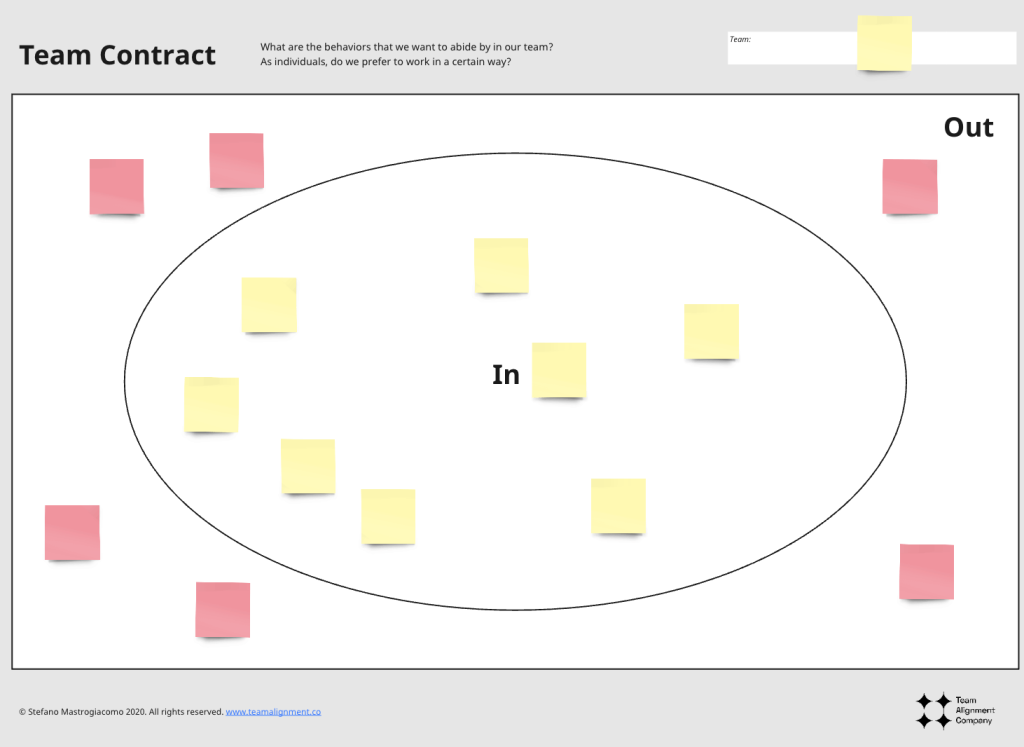
One of the things that’s so complex about cross-functional teams is that different members bring in norms and traditions from their own respective teams — and those might not always mesh well with each other.
For example, one team might favor fast-paced and lively meetings where everybody freely chimes in, while another prefers more independent thinking time over a rapid-fire conversation.
For a cross-functional team to be successful, you need to establish new norms that jive with everybody. This Team Contract template created by Stefano Mastrogiacomo, the founder of the Team Alignment Company, can help you do that.Using the template, the team will discuss and agree on team rules and behaviors. Put simply, what’s in and what’s out? It’s a great way to boost psychological safety and ensure everybody feels comfortable in your team environment.
3. Boost understanding with the Cross-Functional Team Setup
HOW LONG YOU NEED: 30 minutes (each team member creates their profile independently)
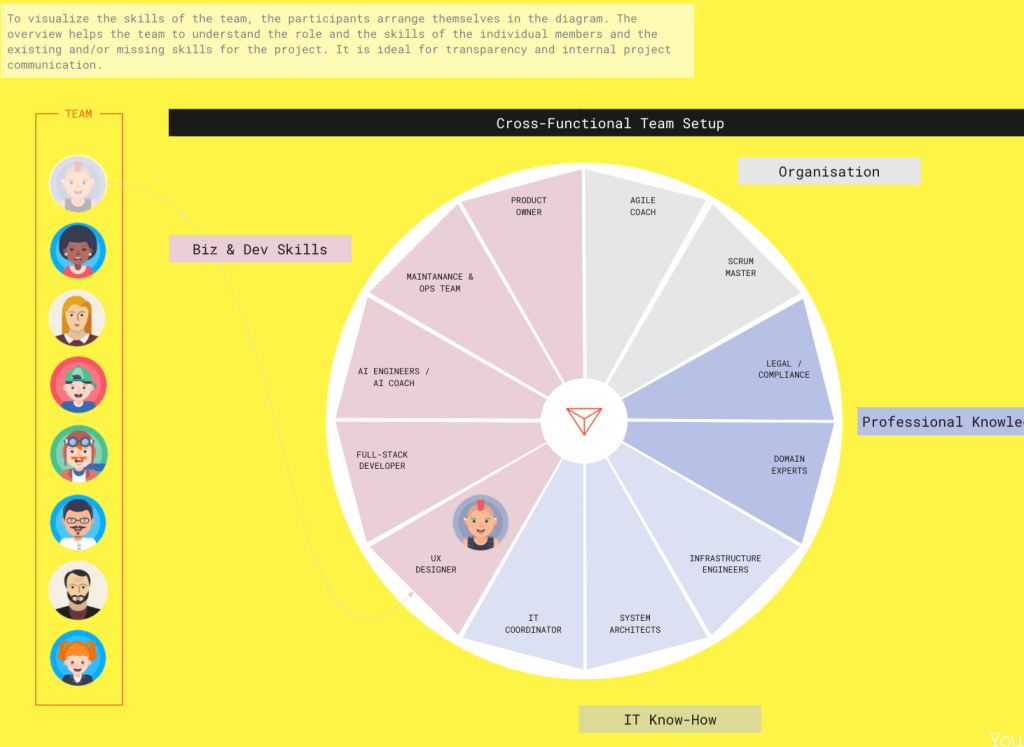
Particularly in large organizations, people brought onto a cross-functional team might not have the first clue who some of their other team members are.
Young Digitals Consulting created this Cross-Functional Team Setup template to help new team members learn a little more about each other. Each team member creates a profile, which includes information about them — some work-related and some more lighthearted or trivial. Team members also need to create a diagram and organize themselves to visualize the skills on the team.
People can do this activity on their own time, rather than in a big group setting. But you can certainly pull everybody together to discuss if you think it would benefit your team.
4. Establish trust and familiarity with Fika DNA
HOW LONG YOU NEED: 30 minutes per pair of team members (activity can be repeated as many times as you want with different pairs)
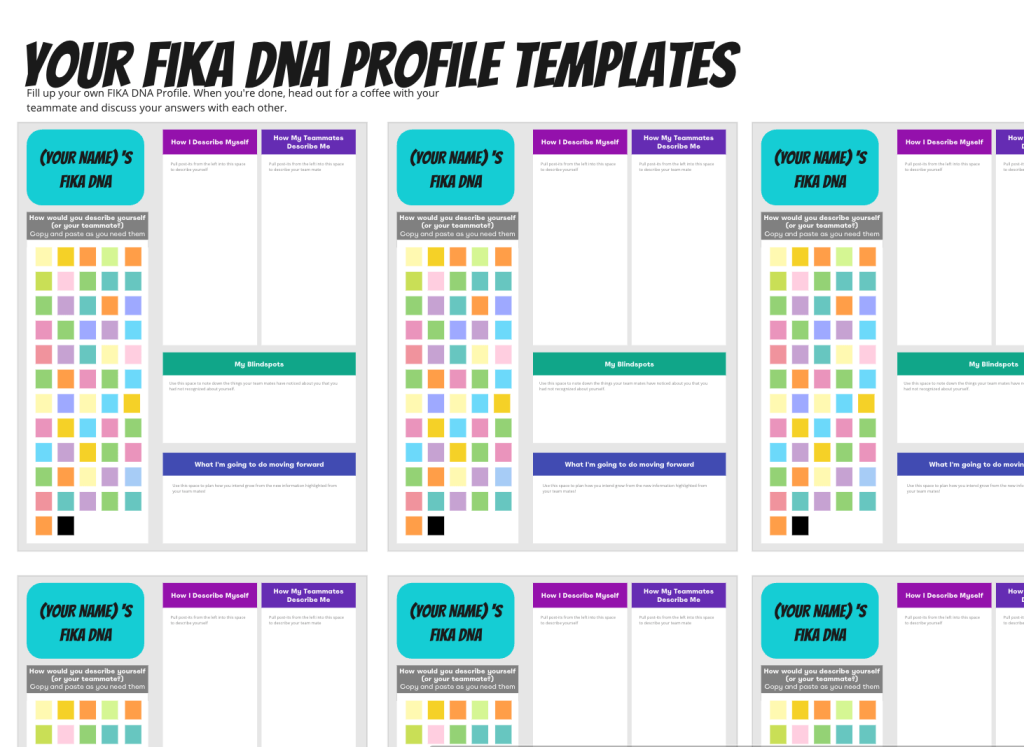
Fika is a Swedish word that essentially means chit-chatting over coffee. In terms of your team, it’s an opportunity for them to get to know each other on a more personal level.
With this Fika DNA template created by global learning provider, Hyper Island, your team members don’t need to be co-located to bond over a cup of Joe. Team members pair up and use the template to create a profile of themselves. Those pairs will chat to get to know each other better, and then each person will create a Fika profile of their partner.
You can repeat this activity as many times as you want, mixing up different pairs until all of your cross-functional team members have a chance to connect with each other.
5. Recognize and respect individual preferences with a Personal User Manual
HOW LONG YOU NEED: 30 minutes to an hour (each team member creates their user manual independently)

You probably know the people on your direct team pretty well — how much they like to chime in during meetings, what their emoji usage in Slack means, and maybe even their go-to coffee order.
But when working cross-functionally, team members don’t have that same level of awareness and familiarity. They could very well be working with complete and total strangers.
With this Personal User Manual template created by Lisette Sutherland, Director of Collaboration Superpowers, team members can share what makes them tick. From their communication preferences and their working style to their personal values and some fun facts, these manuals equip team members with the information they need to respect each other’s differences and work together most effectively.
6. Kick off your meetings with an ice breaker
HOW LONG YOU NEED: 15-30 minutes per ice breaker
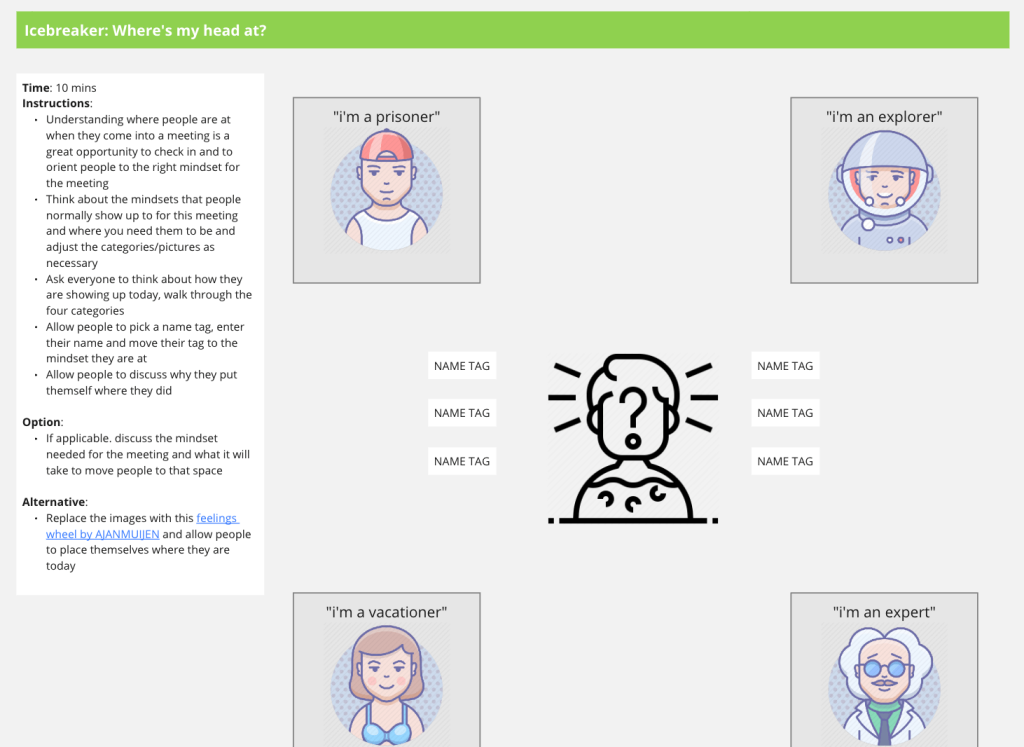
Cross-functional teams shouldn’t be all work and no play. Whether you’re leading a newly-established team or just need a fun way to start off your next meeting with an existing cross-functional group, ice breakers give people a low-pressure and lighthearted way to bond and warm up before jumping into the actual work.
You can forget trust falls or questions about desert islands. This Terrific Ten Ice Breakers template by Evolve Partners gives 10 unique ice breaker ideas of varying time and complexity.
Whether it’s a rousing game of Pictionary or a contest to see who can share the best GIF, these activities will inspire plenty of laughs — and foster a sense of closeness too.
Cross-functional doesn’t have to mean chaos
Cross-functional collaboration isn’t without its challenges, but those shouldn’t overshadow the benefits.
Working cross-functionally allows team members to gain exposure to other people and aspects of the organization, benefit from diverse skills and perspectives, experiment with other ways of working, and perhaps most importantly, deliver a top-notch final result.
All of that starts with some solid cross-functional team building — and these templates will help you get the magic rolling.
GIVE YOUR CROSS-FUNCTIONAL TEAM THE PLATFORM THEY NEED FOR SEAMLESS COLLABORATION. GET STARTED WITH MIRO FOR FREE TODAY.

